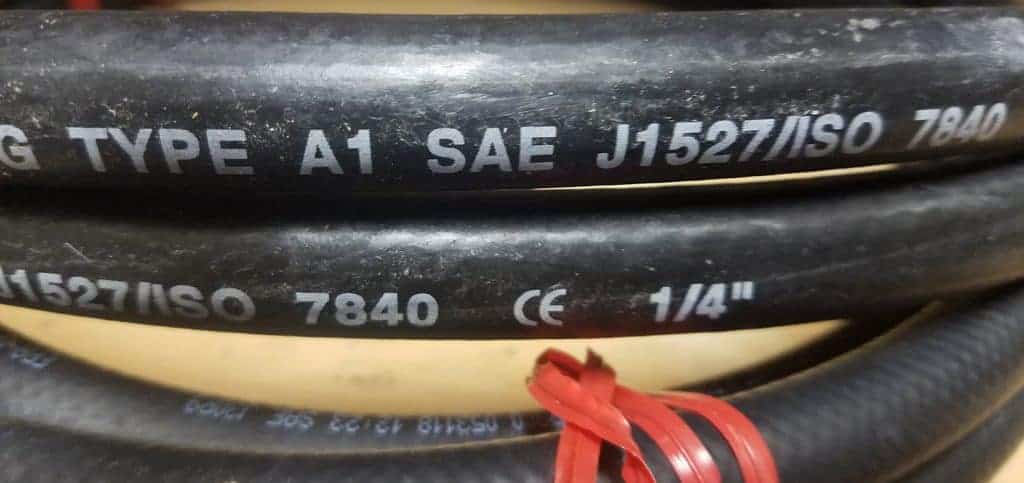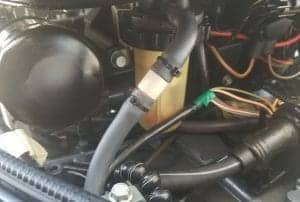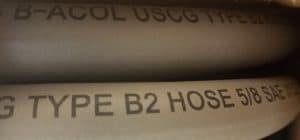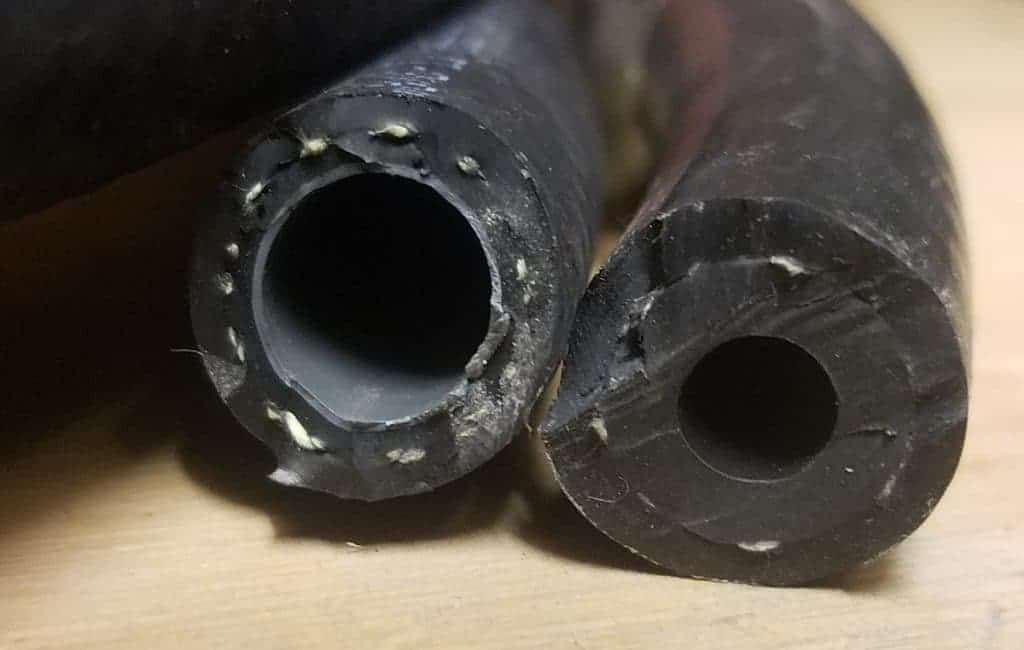Have you ever noticed that there are different sizes for fuel lines? And asked yourself, what’s the difference? Does it really matter? Of course, it does!
What Size Fuel Line To Use For An Outboard, 5/16″ or 3/8″? 5/16″ fuel line can be used in up to a 115 HP outboard engine. Anything above that has to be a 3/8″ fuel line.
Here is a more in-depth break down of the differences in the hoses and the biggest reasons why it is important to have the right ones installed!
The Difference Between the Two Sizes
Obviously, the difference between the two fuel lines is one is smaller than the other. We get it. But there is a little more to it than that.
The 5/16″ fuel line is actually perfect for smaller outboards. Being a little smaller than the 3/8″ hose, it works great for little kicker motors, and sailboat outboard engines.
Being smaller allows it to go easily into a smaller rigging tube, depending on the application. Still allowing the proper amount of fuel to get to the engine without having any problems. Of course, the 3/8″ fuel line will work for any of the outboards.
But most smaller outboards have fittings or quick connects on them that are set for a 5/16″ hose. It’s basically the standard hose for the smaller engines.
Like we said in the beginning, the 3/8″ line is required on anything that is larger than a 115 HP engine.
The Straw Theory
Look at it like this. You can breathe through a straw. But over time you will not be getting the proper amounts of air that you need and will eventually pass out!
The same applies for the engine. It can drink the fuel through the 5/16″ line, but for how long is the real question! Larger outboards, 150 and above, require more fuel to run at higher RPM’s.
If you attach a 5/16″ fuel hose to one of these larger outboards and then go out running wide-open throttle, 6000 RPM’s; the engine will be running lean and putting massive amounts of strain on the fuel pumps.
This causes premature failure of the fuel pumps and possibly major damage to the actual powerhead of the engine! (You should read this for a detailed description of What Exactly Is An Outboard Powerhead!) Sometimes we like to overthink things and make them more complicated than they need to be.
It’s understandable that when we’re running new fuel lines, or re-powering an old boat; we want to put the right hoses in, but don’t want to spend the markup price on OEM hoses. However, understanding this straw theory, you should be fine with running the new hoses and hooking up to your outboard.
Above and Below Deck Fuel Lines
It is also very important to understand that there are different types of fuel hoses. And different specifications for different applications put in place for safety purposes.
Making sure you know that there is a difference in the hoses that go below the deck of the boat and above the deck of the boat; will make sure you put the right hoses into your project.
Hoses come with different US Coast Guard ratings; A1, A2, B1, and B2:
- A1 Hoses: Are used for feeding fuel from the boat fuel tank to the fuel filter bracket or the engine. AKA Below Deck Rating. They have a fire-resistant covering on the outside. They have the least permeable rating and are designed to have fuel in them at all times.
- A2 Hoses: Are used for the fuel tank vent hose below the deck. They aren’t designed to have fuel sitting in the hose but do have a fire-resistant covering on the outside of the hose.
- B1 Hoses: Are used for feeding fuel from the boat fuel tank to the fuel filter bracket BUT ABOVE THE DECK OR NOT ENCLOSED! They are basically the same as the A1 hoses but do not have the fire-resistant covering that is on the outside of the hose.
- B2 Hoses: Are used for the fuel tank vent hose BUT ABOVE THE DECK OR NOT ENCLOSED! Basically the same as the A2 hose but without the fire-resistant covering on the outside of the hose.
 This is just a quick break down of the difference and ratings of the fuel hoses. For a more in-depth break down of the hoses and what their ratings are. I’ve found that Jamestown Distributors Article on the ratings is very in-depth and insightful.
This is just a quick break down of the difference and ratings of the fuel hoses. For a more in-depth break down of the hoses and what their ratings are. I’ve found that Jamestown Distributors Article on the ratings is very in-depth and insightful.
The Rule of Thumb For Manufactures
The question always comes up; what about my specific engine and what does that manufacture say?
The general rule of thumb still stands regardless of what manufacturer engine you have! Whether it be Honda, Mercury, Yamaha, Suzuki, Tohatsu, Nissan, or Johnson/Evinrude.
Any engine that is above the 115 HP requires you to use a 3/8″ fuel line! The basic functionality of a combustion engine and the fuel demand for the horsepower is the same!
 You will also know what fuel line is supposed to be there by looking at the hook up on the engine. Wherever you hook up the fuel line on the engine there will be a hose barb. If it is a 5/16″ or a 3/8″ hose barb, that is what you should use.
You will also know what fuel line is supposed to be there by looking at the hook up on the engine. Wherever you hook up the fuel line on the engine there will be a hose barb. If it is a 5/16″ or a 3/8″ hose barb, that is what you should use.
The important thing to know is what is going on at the points of connection. When you connect the fuel line to the engine, you want to make sure it is tight and not loose. Being loose will give an air leak which is a place to cause problems.
A lot of times when there is an air leak in the fuel lines, the engine will lose prime after sitting for a little while. Then you have to prime up the system again before running!
Here is an article that we wrote on Why An Outboard Engine Loses Prime & How You Can Fix it!
Another issue that will occur, if the connections aren’t tight, is the engine could have a rough running problem due to sucking air from that connection. If the fuel pump is sucking in air every time it tries to get fuel, it will aerate the fuel and run the engine lean. Giving you all kinds of different problems!
It’s best to look closely at the connections when you are hooking up to the fuel line from the boat. If you have a 90 HP and the 3/8″ hose is super loose. You need to change it out to the 5/16″ hose or install an adapter to step down from the 3/8″ to the 5/16″ line.
Think Safety & Longevity!
 Safety and longevity should be a huge concern for any boater. Having a fuel leak on a boat is no joke! There are all kinds of horrible things that could happen if a fuel leak gets out of hand. Or even catches on fire!
Safety and longevity should be a huge concern for any boater. Having a fuel leak on a boat is no joke! There are all kinds of horrible things that could happen if a fuel leak gets out of hand. Or even catches on fire!
Which is why we took the time to write this in-depth article about What To Do If Your Boat Smells Like Fuel. In order to help give an in-depth perspective of how to safely deal with the issue if you ever have to!
Another thing to think about is the longevity of the engine. Going back to the straw theory, having the correct fuel line installed will help ensure the proper fuel consumption for the engine.
Thus, keeping up and even prolonging the life of the engine. You don’t want to cause premature failure of the engine or any of the components that are in the fuel system.
Hopefully, this gets you in the right direction and now you understand what size fuel line you should put on your boat!
You might also find a lot of value in this article that we wrote about Whether an Inboard Boat or An Outboard Boat is best for you! Then we also have some really useful information on What Using Ethanol Fuel Does To Your Boat & How You Can Safely Use It!
If you’ve got any questions or comments, let us know by subscribing to our YouTube Channel!
And if you would like to support us to continue bringing you great content, please click the link below to Amazon where we get a commission from anything you are already going to buy!
And you can also donate by clicking the donate button here or on the right hand of the screen!
It really helps us out and we thank you so much for your support!
Check Us Out!
We’d like to invite you to come and check us out on YouTube! We make all kinds of boating, how-to, service, and outboard repair videos! We also have some boating adventures from living in the Florida Keys! Thanks for taking the time to read our article and we hope that it has helped you decide what fuel line you will be running to your outboard.

